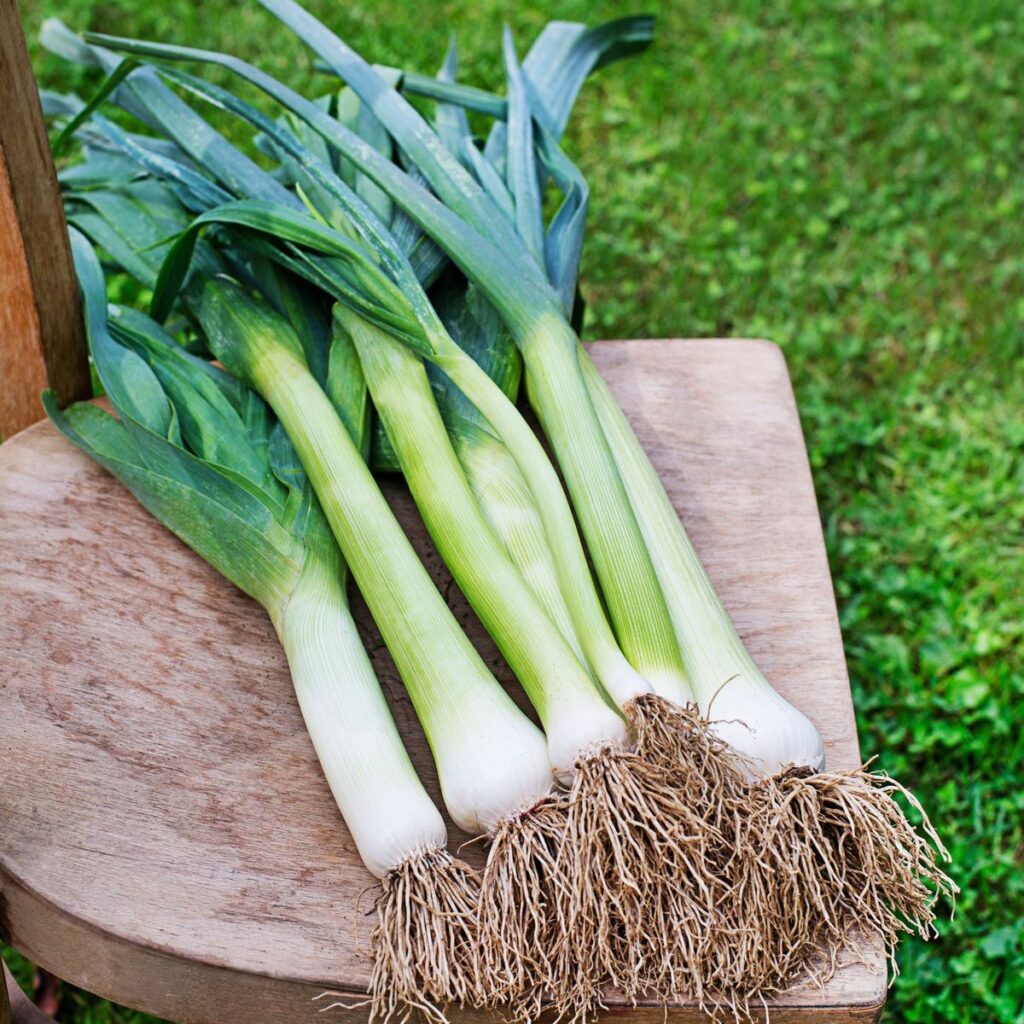Easily one of the most underrated components in a Christmas dinner, knowing exactly when to harvest leeks is key to adding plenty of depth and dimension to your festive feast this year.
Anyone who has already learned how to grow leeks successfully will tell you that there’s a lot to love about these gorgeous vegetabls – these elegant alliums look every bit as good as they taste when they’re in the ground.
So, when to get them out of the ground? Well, the general window for harvesting onions is late summer to early spring. The specifics, though, will largely depend on the type you’re growing and when you planted them.
Whether you’ve planted yours in an allotment, a small vegetable garden, or a raised bed, you’ll likely be pleased to know that leeks are one of those crops that works to our schedules.
‘You’ll know they’re ready when the leaves begin to yellow and die back, though some people like to leave them in the ground even longer,’ explains Steven Bell, the CEO of Paving Shopper.
Going on to explain that leeks are hardy and can survive light frosts, Steven goes on to note that ‘letting them sit for a bit after a frost can actually make them sweeter’.
‘The cold breaks down some of the starches in the plant and converts them into sugars, giving the leeks a more refined, mellow flavour,’ he points out.
Kent & Stowe Stainless Steel Hand Fork Fsc-100percent
Town & Country Square Flexi-Tub Bucket
Whether you grow them from seeds or plug plants, there are a few things you can watch out for if you want to know when to harvest leeks like a pro.
Generally speaking, they take up to five months to go from seed to harvest, although Steven says it’s best to wait until the bulbs have reached a good size – about 1 inch in diameter – before you harvest them.
‘If you want a more tender leek, consider harvesting a bit earlier (even very small leeks will be delicious), but if you can stand waiting, the cold might just reward you with a richer taste.’
How do you know when your leeks are ready to harvest?
If you’re not sure when your leeks are ready to harvest, it’s likely because there are so many options available. Because, while December is the perfect time for harvesting this Christmas dinner staple, any time from autumn to early spring will work.
‘Leeks are pretty adaptable, and the timing of your harvest can vary depending on when you planted them. Typically, though, you can harvest leeks anytime from late autumn to early spring,’ says Steven Bell of Ethan Mason Paving.
The RHS adds that ‘baby leeks take only a couple of months [to become ready for harvesting], while large mature leeks can take four months or more’.
Can you leave leeks in the ground too long?
While many vegetables prefer to be harvested quickly, leeks (like onions and garlic bulbs) can afford to stay in the ground for longer.
‘Depending on the time of sowing, leeks can be harvested throughout most of the year but taste much better after a frost as the cold weather concentrates the sugars which makes them both sweet and mild tasting,’ says Morris Hankinson, director of Hopes Grove Nurseries.
Morris goes on to explain that some leek varieties can be harvested when they are smaller; indeed, multi-sown leeks may be smaller as well.
‘As a general rule of thumb, though, leeks can be harvested when they are at least 5cm in diameter,’ he says.
Make like the gardening gurus at the RHS and extend the cropping period by harvesting alternate leeks along the row; these should be smaller and milder, but you can have your leek and eat it by leaving the rest to grow larger.
Are leeks still good after they flower?
Leeks tend not to be as good after the flower (or ‘bolt’, if you want to get technical), as the blooming process causes the leek to become bitter, woody, and tough.
Make like the RHS pros, then, and ‘remove the [flowering] stalk as soon as possible, while the bud is still green and tightly closed’.
And just like that, you know exactly when to harvest leeks for the tasty crop all your hard work deserves. Anyone else planning on serving theirs up as a cheesy side dish on Christmas day?
Read the full article here
